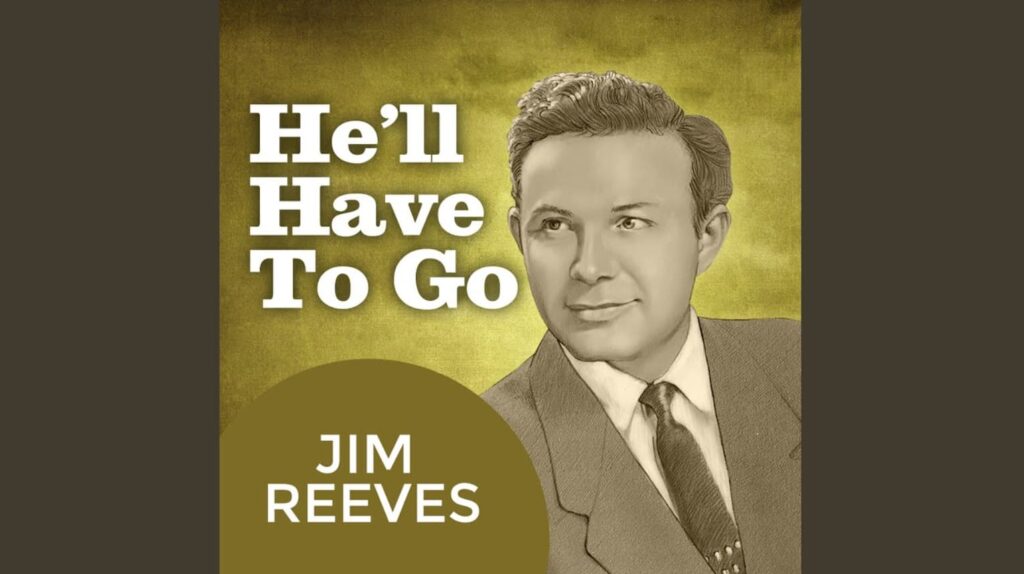
Jim Reeves – “He’ll Have to Go”: A Velvet Touch of Heartbreak that Defined the Nashville Sound
There are certain songs, aren’t there, that feel less like music and more like a cherished old photograph—faded around the edges but perfectly clear in the heart. Jim Reeves’ definitive recording of “He’ll Have to Go,” released in late 1959, is one of those timeless treasures. It’s a song that speaks volumes about distance, longing, and the quiet heartbreak of unrequited attention, all delivered with the soothing, deep baritone that earned Reeves the affectionate nickname, “Gentleman Jim.”
This song wasn’t just a hit; it was a cultural phenomenon that cemented Reeves’ legendary status and was a cornerstone of the emerging “Nashville Sound”—a smoother, more orchestrated style of Country music that broadened the genre’s appeal far beyond its traditional audience. The track’s phenomenal success proved just how ready the world was for this sophisticated blend of Country twang and Pop polish. After its November 1959 release on RCA Victor, “He’ll Have to Go” enjoyed a stunning run on the charts in early 1960. It soared to the No. 1 position on the Billboard Hot Country Singles chart, reigning for a remarkable fourteen consecutive weeks, and achieved crossover brilliance by peaking at No. 2 on the mainstream Billboard Hot 100 pop chart. It was a platinum record success that transcended categories, a rare feat that few artists of any era can claim.
The very genesis of the song is a lovely, simple story that speaks to the power of human connection, or the lack thereof, in the age of the telephone. Written by the husband-and-wife team, Joe and Audrey Allison, the song’s signature opening line was inspired by a real-life phone call. Because of background noise and Audrey’s naturally soft voice, Joe had to repeatedly ask her to get closer to the receiver, leading her to pen the unforgettable, intimate phrase: “Put your sweet lips a little closer to the phone.”
When Jim Reeves recorded the composition on October 15, 1959, he was already evolving his style, moving away from the more traditional, nasal Country delivery to the intimate, lower register croon—the “velvet touch”—that became his trademark. Under the production guidance of the great Chet Atkins, the recording was subtly lush, featuring a small ensemble of Nashville’s best, including Floyd Cramer’s gentle piano, Marvin Hughes’ shimmering vibraphone, and the harmonious support of the Anita Kerr Singers. This arrangement was key to the song’s crossover appeal.
The meaning of the song resonates deeply, especially for those of us who remember a time when every phone call felt like an event, a direct line to a distant heart. It captures that universal, agonizing moment of realizing you’re not the only one in your sweetheart’s life. The narrator, speaking over the wire, is asking for a moment of truth, a test of devotion—the gentle, yet firm command that the “friend there with you” simply “He’ll Have to Go.” It’s not a song of anger or confrontation, but a quiet, earnest plea for clarity and commitment. “Should I hang up or will you tell him, he’ll have to go?” he asks, his voice smooth as silk but heavy with yearning.
For those of us who came of age in that era, this song is more than just background music; it’s an emotional bookmark. We remember slow dances in dimly lit halls, the sound of the needle hitting the vinyl, and the quiet comfort of Reeves’ voice giving words to feelings we could barely articulate. His passing in 1964 was a tragic loss, silencing one of music’s most distinctive voices too soon. Yet, the timeless elegance of “He’ll Have to Go” continues to play, reminding us that true class and genuine emotion never fade. It is a perfect capsule of mid-century romance, a smooth, beautiful piece of work that still has the power to stir memories and melt hearts, proving that sometimes, the quietest songs make the loudest impact. It remains a beautiful and enduring testament to a golden age of songcraft and the unforgettable artistry of Gentleman Jim Reeves.